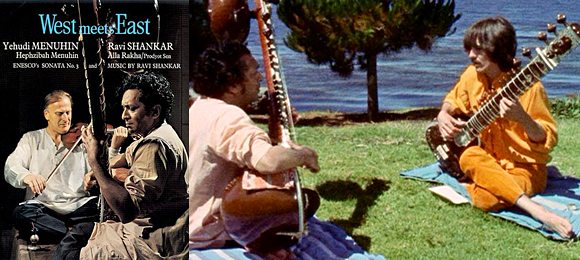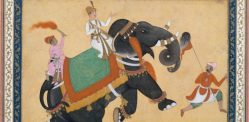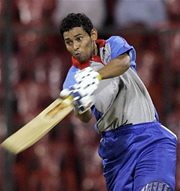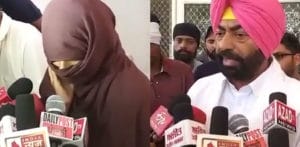Ravi Shankar was responsible for making the sitar a popular instrument in the West.
The invention of the sitar can be traced back to the Mughal period in India. It is said that this instrument was developed from Persian lutes which were commonly played in the Mughul durbars.
Many documents cite an 18th century fakir named Amir Khusru as the inventor of the sitar. He is said to have evolved it from a Persian instrument called ‘sehtar’.
Amir Khusru’s grandson Masit Khan is credited to have composed many slow gats in dhrupad style which was popular during those times. Even today, this style is called Masitkhani gat. His son Bahadur Khan further developed this genre.
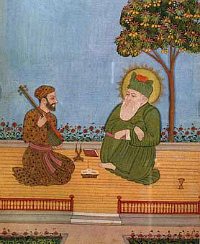
Other important sitar personalities are Rahim Sen and Amrit Sen who modified the stringing and tuning of this instrument and introduced many new playing techniques.
It is interesting to note that the sitar continues to evolve even today. Presently, two types of sitar are popularly played and they are named after the famous sitar musicians Ravi Shankar and Vilayat Khan.
The Ravi Shankar or RV sitar has 12-14 sympathetic strings and an extra small pumpkin gourd at the neck. This sitar typically produces deep, bass-filled sounds. A noted feature of the RV sitar is the elaborate penwork and carving on it.
The Vilayat Khan (VK) sitar is slightly smaller than RV and has just one gourd. It has fewer sympathetic strings and no bass strings. The VK sitar produces a more chordal and fuller sound.

Ravi Shankar was single-handedly responsible for making the sitar a popular instrument in the West.
He toured extensively, and composed music with violin legend Yehudi Menuhin and other musicians. In fact, his collaboration album with Yehudi Menuhin named West Meets East received a Grammy in 1967.
Ravi Shankar coached the Beatles’ George Harrison on how to play the sitar and the Fab Four readily took to the instrument and used it extensively in their memorable hits ‘Love You To’, ‘The Inner Light’, ‘Across The Universe’, ‘Within You, Without You’ and ‘Norwegian Wood’. The huge success of these songs contributed immensely to the popularity of the sitar around the world.
The Rolling Stones used the sitar in ‘Paint It Black’, ‘Street Fighting Man’ and ‘My Little One’ and the sitar started becoming a fad among top flight pop and rock musicians.
Other artists innovated by using the guitar to play sitar sounds. Some used a modified electric sitar for easier performance but ensured the primary tone colour was preserved.
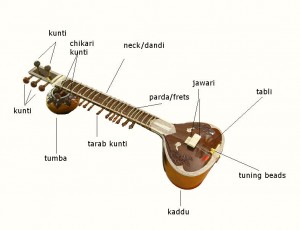
Even Western classical music was not left out as The Move’s Roy Wood memorably played Tchaikovsky’s ‘1812 Overture’ on the sitar in the song ‘Night Of Fear’.
In the 1970’s, noted artists and bands including Sir Elton John, Stanley Dan, T Rex, B J Thomas and Stevie Wonder featured melodious sitar strains in their hit tracks.
Rock band Metallica used the sitar creatively in their mega hit track, ‘Wherever I May Roam’. The sitar holds its own even today and many Western musicians continue to use this sublime instrument in their creations.
Ravi Shankar’s beautiful daughter Anoushka Shankar is a noted sitar maestro in her own right and regularly plays at concerts in the West.

Noted sitar musician, Niladri Kumar has created a revolutionary instrument based on the sitar called the ‘zitar’ which is a combination of the guitar and sitar.
This instrument has five strings and can be played with an electronic pick to create authentic guitar rock sounds.
Niladri’s 2008 album named zitar featuring music created with his innovative instrument was a huge critical and popular hit selling millions of copies around the globe.
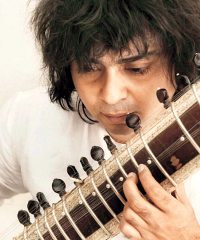
Niladri has used his unique zitar instrument to create mellifluous Bollywood hits including the songs ‘Dheere Jalna’ (Paheli, 2005), ‘Crazy Kiya Re’ (Dhoom 2, 2006) and ‘Tere Naina’ (My Name is Khan, 2010).
Other famous sitar players in Indian history besides Vilayat Khan and Ravi Shankar include Mustaque Ali Khan, Inayat Khan, Gokul Nag, Halim Jaffar Khan, Balaram Pathak, Rais Khan and Kartick Kumar.
Without a doubt, the humble beginnings of the sitar from the Indian subcontinent have seen it evolve beyond measure.
The sitar is arguably one of the most important instruments to have successfully fused together Eastern and Western sound. Still predominantly used even today, it remains one of the most popular Indian instruments for musicians and artists across the globe.




















































